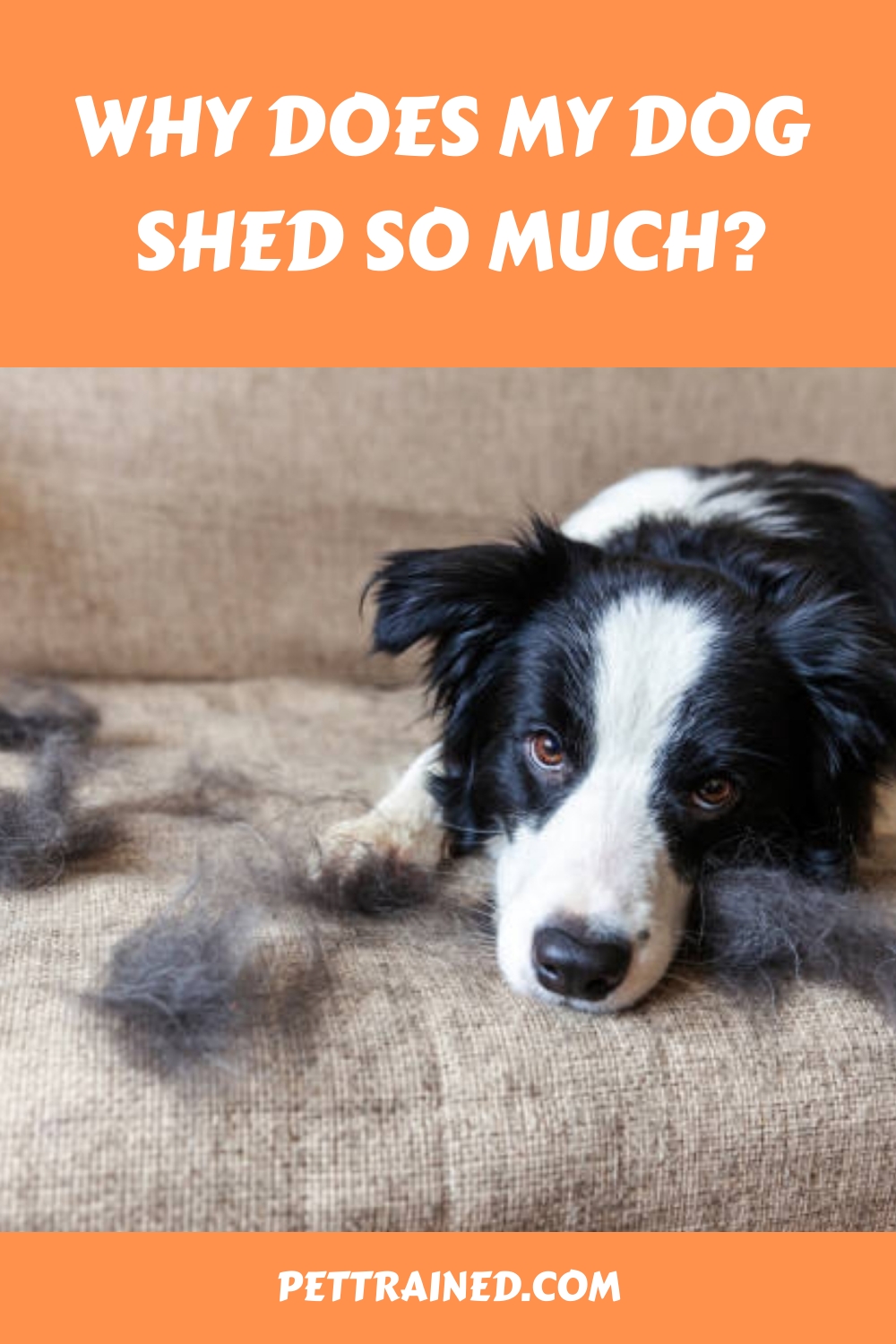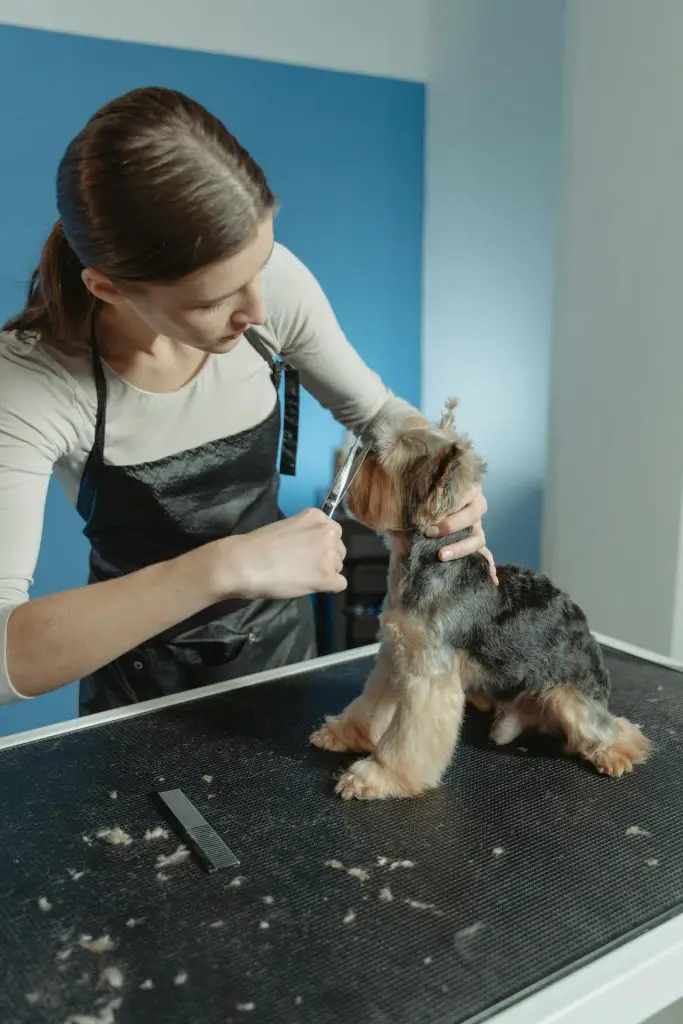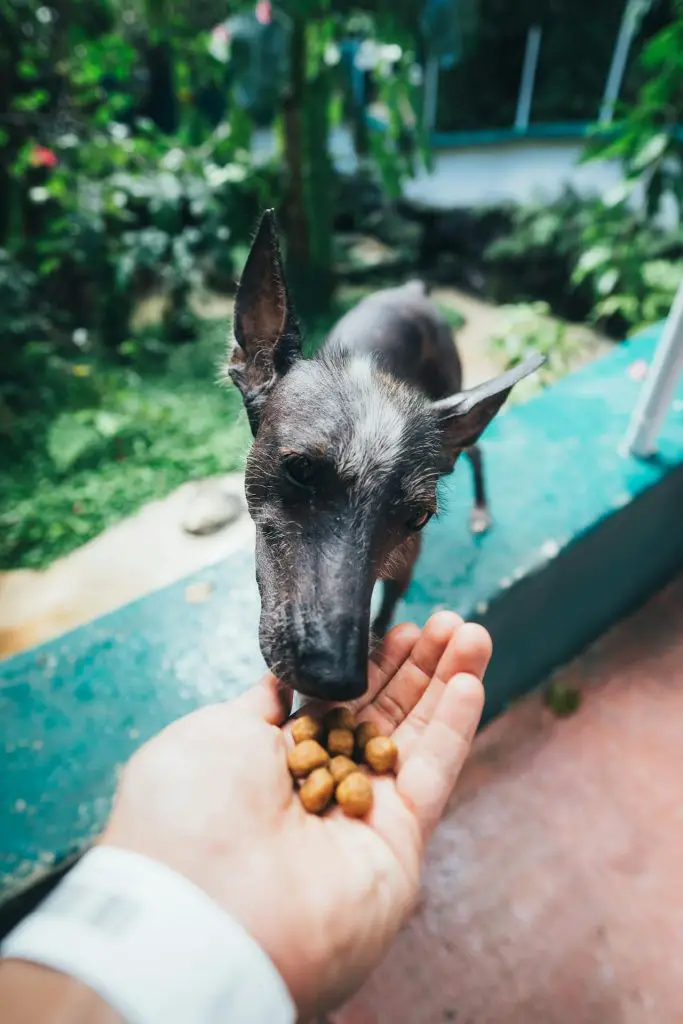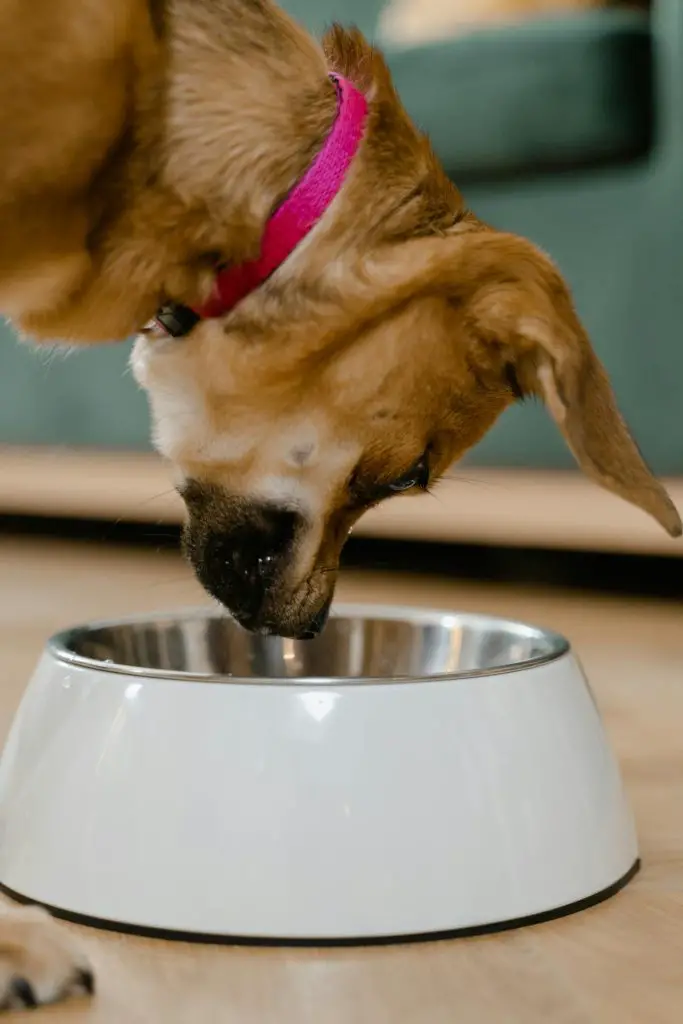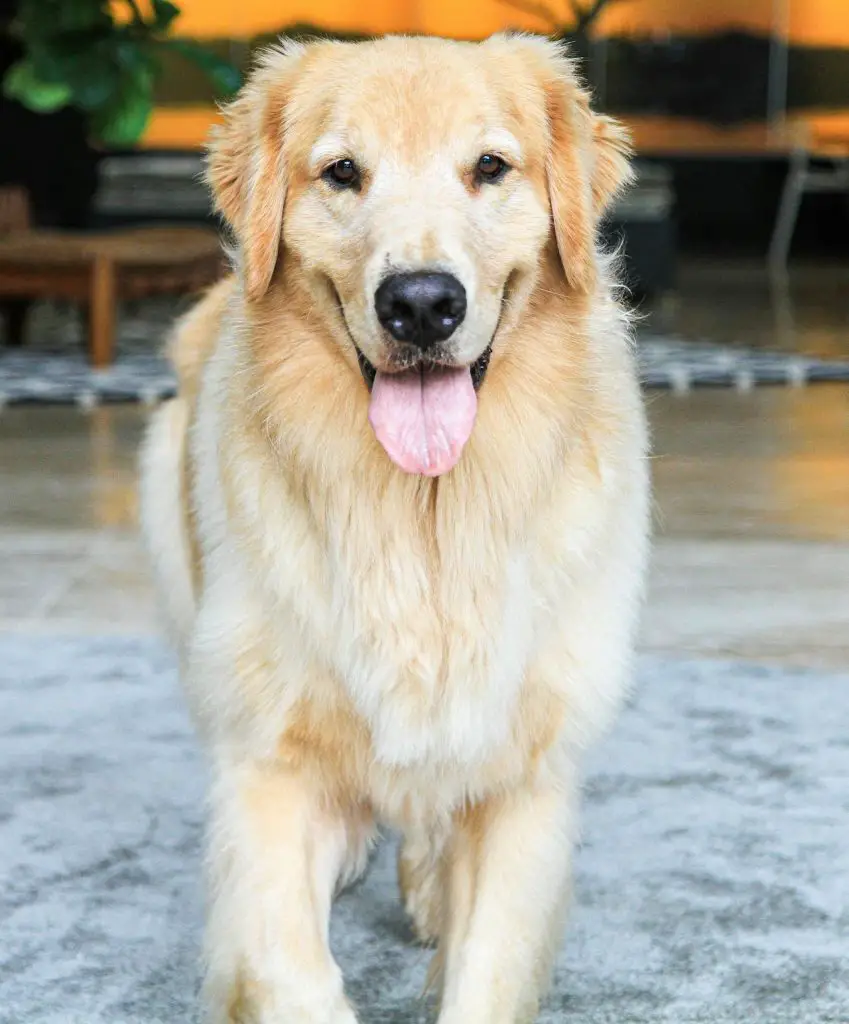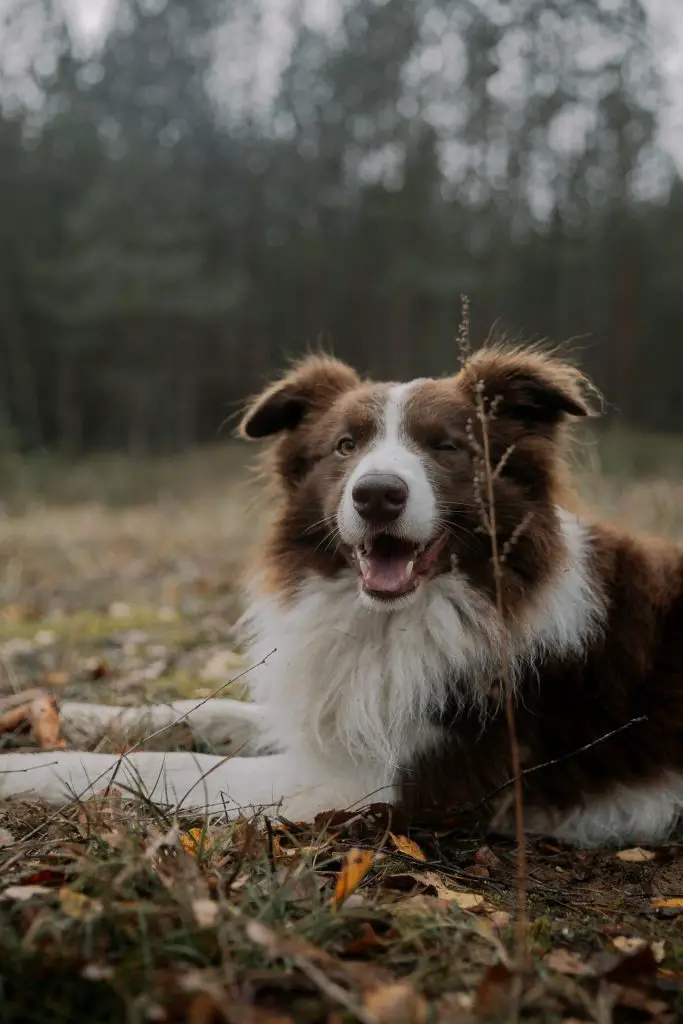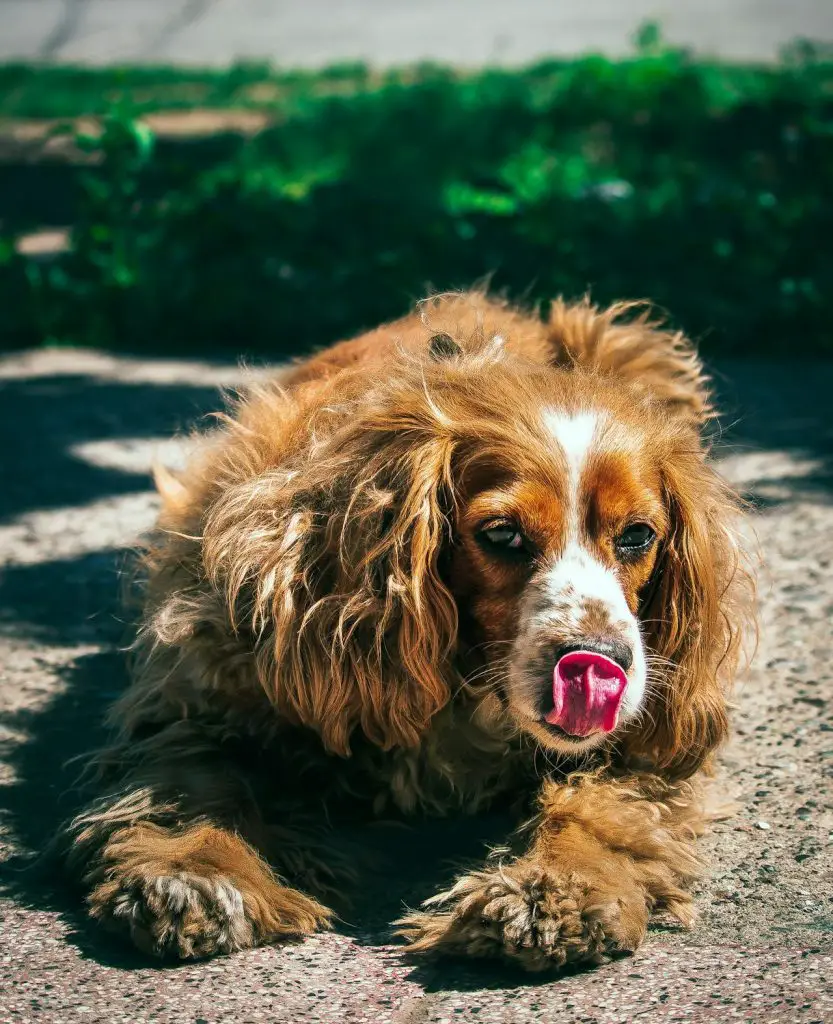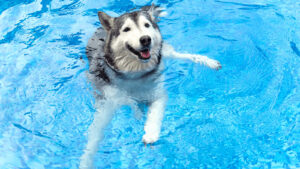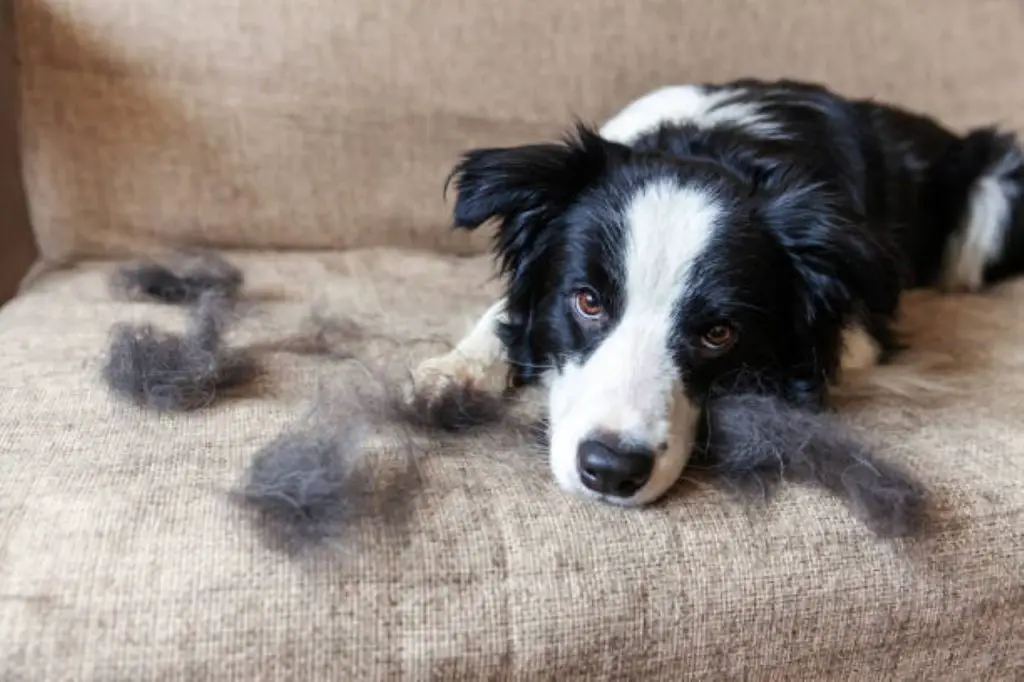
As you’re vacuuming up yet another furry dust bunny, you can’t help but wonder why your dog sheds so much – and it’s probably no coincidence that it’s happening right as the seasons are changing. You’re not alone in this concern, as many dog owners experience an uptick in shedding during spring and fall. But what’s driving this excessive shedding? Is it just a natural part of your dog’s hair growth cycle, or is there an underlying issue that needs attention? The answer may be more complex than you think, and it starts with understanding your dog’s unique characteristics.
Table of Contents
1. Normal Shedding in Dogs
Dogs shed normally as a result of their hair growth cycle, which is regulated by hormones and influenced by genetics, health, and environmental factors.
You may have heard various shedding myths, but the truth is, all dogs shed to some degree. This natural process is necessary for maintaining their coat’s health and appearance.
As you groom your dog, you’re not only removing loose hair, but also distributing skin oils and preventing matting. Regular grooming techniques, such as brushing or combing, can greatly reduce the amount of shedding.
However, some breeds, like Siberian Huskies and Newfoundlands, tend to shed more heavily due to their thick, double coats.
This post contains affiliate links. However all the information provided on this site are my own honest opinions. See more in Disclaimer.
Factors like nutrition, climate, and overall health can also impact your dog’s shedding. A well-balanced diet rich in essential fatty acids and regular health check-ups can help promote a healthy coat.
2. Seasonal Shedding Patterns

As the seasons change, your dog’s coat undergoes significant transformations to adapt to shifting temperatures and humidity levels, triggering pronounced shedding patterns that require attention and adjustments to their grooming routine.
During spring, your dog sheds its thick winter coat to make way for a lighter, more breathable coat.
This process, known as spring shedding, can be intense, with dogs releasing large amounts of undercoat and guard hairs.
In contrast, as temperatures drop in the fall, your dog grows a new winter coat to provide insulation and protection from the elements.
This coat is typically thicker and denser than the spring coat, with a thicker undercoat and longer guard hairs.
As the seasons cycle, your dog’s shedding patterns will adjust accordingly.
By understanding these seasonal shedding patterns, you can better plan your dog’s grooming schedule, ensuring they receive the necessary attention to prevent matting, tangling, and skin irritation.
Regular brushing and grooming can also help reduce shedding and promote a healthy, well-maintained coat.
3. Health Issues That Cause Shedding

In addition to seasonal fluctuations, underlying health issues can trigger excessive shedding in your dog, and identifying these conditions is essential for providing proper care and management.
You should be aware of the common health issues that can cause excessive shedding in your dog.
Skin infections, such as bacterial or fungal infections, can lead to excessive shedding, especially if left untreated.
These infections can cause inflammation, itching, and irritation, resulting in excessive shedding.
Parasitic infestations, including fleas, ticks, and mites, can also trigger excessive shedding in your dog.
These parasites can cause discomfort, itching, and skin irritation, leading to excessive shedding.
Moreover, hormonal imbalances, such as hypothyroidism or Cushing’s disease, can also contribute to excessive shedding.
If you suspect that your dog’s excessive shedding is caused by an underlying health issue, you should consult with your veterinarian to rule out any potential health problems.
Early detection and treatment can help manage excessive shedding and prevent further complications.
4. Diet and Nutrition Factors
When considering your dog’s shedding, you’ll want to examine their diet and nutrition, as certain factors can greatly impact their coat health.
You’ll need to watch for signs of food allergies, which can trigger shedding in some dogs.
Additionally, nutrient deficiencies can cause shedding, so it’s crucial to verify your dog is receiving a balanced and complete diet.
Food Allergy Triggers Shedding
Commonly, a dog’s food allergy can trigger excessive shedding, especially if the animal is sensitive to a particular ingredient, such as beef, dairy, or soy, in its diet.
You’ll notice that your dog develops skin problems, such as itching, redness, and lesions, along with shedding, when it has an allergic reaction to its food.
Food intolerance can cause a range of symptoms, including gastrointestinal issues, digestive problems, and skin issues.
If you suspect that your dog has a food allergy, it’s crucial to work with your veterinarian to determine the culprit ingredient.
To address the issue, your veterinarian may recommend a hypoallergenic diet or an elimination diet.
This involves removing the suspected allergenic ingredient from your dog’s diet and monitoring its symptoms.
If the symptoms improve, it’s likely that the removed ingredient was the cause of the allergic reaction.
You can then work with your veterinarian to develop a customized diet plan that avoids the allergenic ingredient and guarantees your dog receives the necessary nutrients for overall health.
Nutrient Deficiencies Cause Shedding
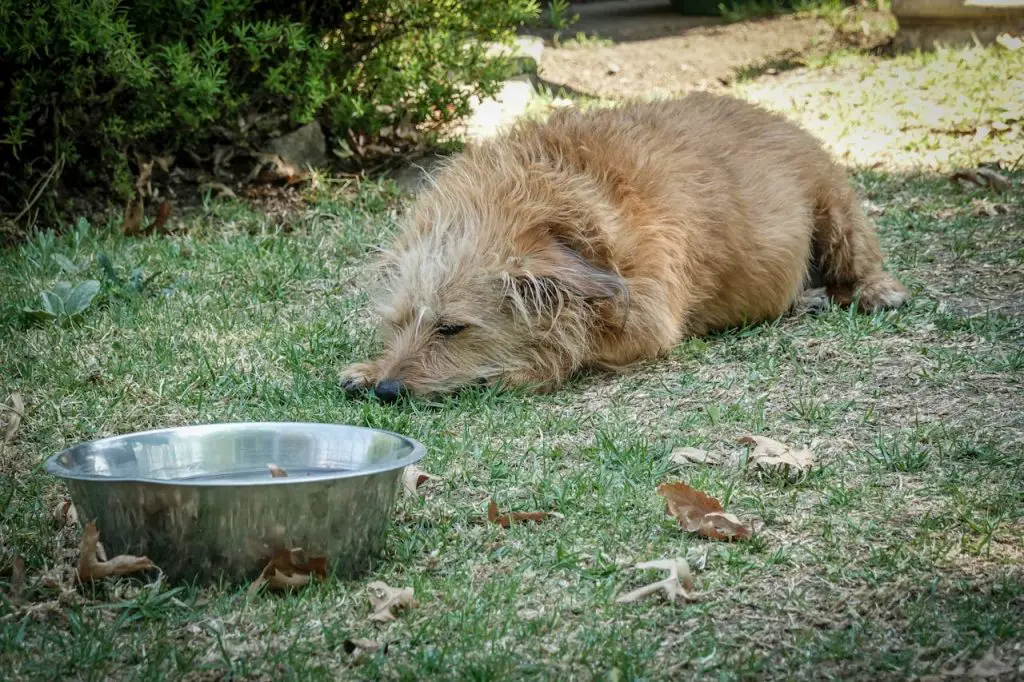
A significant number of dogs shed excessively due to nutrient deficiencies, which can arise from a diet lacking essential vitamins, minerals, or fatty acids necessary for maintaining healthy skin, coat, and overall physiology.
As a responsible dog owner, you need to recognize that your dog’s shedding can be a sign of an underlying issue with their nutrient absorption.
If your dog isn’t getting enough nutrients from their diet, their body may respond by shedding excessively.
Common nutrient deficiencies that lead to shedding include a lack of omega-3 fatty acids, zinc, and vitamin E. These nutrients play an important role in maintaining a healthy coat and skin.
Omega-3 fatty acids, for example, help reduce inflammation and promote healthy skin.
You can address these deficiencies by exploring supplementation options, such as adding fish oil or flaxseed oil to your dog’s diet.
Additionally, you can consider switching to a high-quality dog food that’s rich in essential nutrients.
5. Breed Characteristics and Shedding

Your dog’s breed plays a significant role in determining the amount and frequency of shedding, with some breeds, such as Siberian Huskies and Alaskan Malamutes, shedding heavily due to their thick double coats, while others, like Greyhounds and Whippets, shed very little.
This is because certain breeds have evolved to develop specific coat types that suit their original environments and functions.
For instance, double-coated breeds like Huskies and Malamutes needed thick coats to insulate themselves in freezing climates, whereas sleek, short-coated breeds like Greyhounds and Whippets required minimal coats to facilitate speed.
Understanding your breed’s grooming needs can help you manage shedding. Breeds with thick, double coats require regular brushing to prevent matting and tangling, which can reduce shedding.
In contrast, breeds with short, smooth coats require less maintenance.
By recognizing your breed’s coat type and implementing an appropriate grooming routine, you can reduce the amount of loose hair and minimize shedding.
Familiarize yourself with your breed’s specific characteristics to optimize their grooming and reduce shedding.
This knowledge will empower you to create a shedding-reduction plan tailored to your dog’s unique needs.
6. Hormonal Changes and Shedding
As you explore the reasons behind your dog’s shedding, you’ll discover that hormonal changes play a significant role.
Hormonal fluctuations can trigger shedding, and you’ll want to understand what sparks these changes to better manage your dog’s coat.
Whether it’s the effects of spaying or neutering, or underlying thyroid issues, it’s crucial to grasp the connection between hormones and shedding to provide the best possible care for your furry companion.
What Triggers Hormonal Shedding
Hormonal changes triggered by factors such as daylight exposure, temperature fluctuations, and the dog’s reproductive cycle can cause a shift in the normal shedding process, leading to excessive hair loss.
You may notice that your dog sheds more during seasonal shifts, particularly in spring and fall.
This is because the changes in daylight hours and temperature affect the dog’s hormonal balance, triggering a release of hormones that stimulate shedding.
Additionally, hormonal imbalances caused by stress factors, such as changes in the dog’s environment, social dynamics, or health issues, can also lead to excessive shedding.
For example, a dog experiencing anxiety or separation anxiety may exhibit excessive shedding due to the stress hormones released in its body.
Similarly, a dog with underlying medical issues, such as thyroid problems or skin allergies, may also exhibit hormonal imbalances that contribute to excessive shedding.
Understanding these triggers can help you take steps to minimize shedding and guarantee your dog’s overall health and well-being.
Spaying or Neutering Effects
Spaying or neutering a dog can have a significant impact on its shedding patterns, primarily due to the reduction in sex hormones that play a role in regulating the normal shedding process.
When you spay or neuter your dog, you’re altering the hormonal balance in their body, which can lead to changes in their shedding habits.
For instance, spaying benefits may include reduced shedding in female dogs, as they no longer experience heat cycles. Neutering effects, on the other hand, may cause changes in coat texture and thickness in male dogs.
| Spaying/Neutering | Shedding Changes | Other Effects |
|---|---|---|
| Female Spaying | Reduced shedding | Eliminates heat cycles |
| Male Neutering | Changes in coat texture/thickness | Reduces undesirable behaviors |
| Pre-Spaying/Neutering | Normal shedding patterns | Presence of sex hormones |
| Post-Spaying/Neutering | Altered shedding patterns | Hormonal changes |
| Age of Spaying/Neutering | May impact shedding severity | Affects growth and development |
Keep in mind that every dog is different, and their shedding patterns can be influenced by various factors beyond spaying or neutering.
However, understanding these hormonal changes can help you better manage your dog’s shedding.
Thyroid Issues and Shedding
While the hormonal changes triggered by spaying or neutering can greatly impact your dog’s shedding patterns, another endocrine-related factor – namely, thyroid function – also plays an essential role in regulating the normal shedding process.
Your dog’s thyroid gland produces hormones that regulate metabolism, growth, and development.
When the thyroid gland is underactive, a condition known as hypothyroidism, it can cause changes in your dog’s coat, leading to excessive shedding.
Conversely, an overactive thyroid gland, or hyperthyroidism, can also lead to shedding problems.
Thyroid dysfunction is a common issue in canine health, particularly in older dogs. If you suspect that your dog’s shedding is related to a thyroid issue, consult with your veterinarian.
They’ll perform a physical examination, take a complete medical history, and run diagnostic tests to determine the underlying cause of your dog’s shedding.
If a thyroid issue is diagnosed, your veterinarian will recommend treatment options to help manage the condition and reduce shedding.
By addressing thyroid dysfunction, you can help restore your dog’s coat to its natural health and reduce excessive shedding.
Regular check-ups with your veterinarian will also help monitor your dog’s thyroid health and prevent potential problems.
Reducing Excessive Shedding
By understanding the underlying causes of excessive shedding, you can take targeted steps to reduce the amount of loose hair and prevent related health issues.
Implementing effective grooming techniques is essential in managing excessive shedding. Regular brushing helps remove loose hair, distributes skin oils, and promotes a healthy coat.
You’ll want to invest in shedding tools, such as a shedding rake, furminator, or slicker brush, designed to gently remove undercoat and reduce shedding.
Bathe your dog regularly, using a mild shampoo and conditioner suitable for their coat type. This helps remove dirt, oils, and loose hair.
Consider a deshedding shampoo or conditioner, which can help reduce shedding. Additionally, trim your dog’s coat seasonally to prevent matting and tangling.
Consult a professional groomer for guidance on the best grooming techniques and tools for your dog’s specific coat type.
By incorporating these strategies into your dog’s grooming routine, you can greatly reduce excessive shedding and prevent related health issues, promoting a healthier and happier dog.
Schedule regular veterinary check-ups to monitor your dog’s shedding and adjust their grooming routine as needed.
Frequent Questions
You’ll find that frequent bathing doesn’t necessarily reduce shedding, but rather, it can lead to an improvement in your dog’s coat condition. Adjusting bathing frequency based on individual needs is essential for a healthy coat.
Shaving your dog isn’t a reliable solution to reduce shedding, as it poses significant risks to their coat and skin health. You’ll actually strip away natural coat protection, making them vulnerable to the elements and skin irritation.
“You’re likely wondering if shedding affects your dog’s quality of life. While excessive shedding causes discomfort and anxiety, it rarely has severe health implications; however, it can lead to skin irritations and infections if not properly managed.”
When considering using human hair care products on your dog, remember that product safety is essential in dog grooming. You must verify the product’s ingredients and pH levels to guarantee they won’t harm your dog’s sensitive skin.
As you wield the deshedding tool, envision a rake gliding through silk – gentle, yet effective. However, skin sensitivity varies among dogs, so you’ll need to choose the right deshedding techniques to avoid irritating your dog’s skin.
Final Thoughts

As you ponder why your dog sheds so much, remember it’s no coincidence that their excessive shedding often coincides with seasonal changes or health issues.
It’s a cry for help, a signal that something’s amiss. By identifying the underlying cause and addressing it, you can restore balance to their coat health.
Don’t ignore the signs; take action, and schedule that veterinary check-up – your furry friend’s health depends on it.
Regular care and attention can make all the difference.
